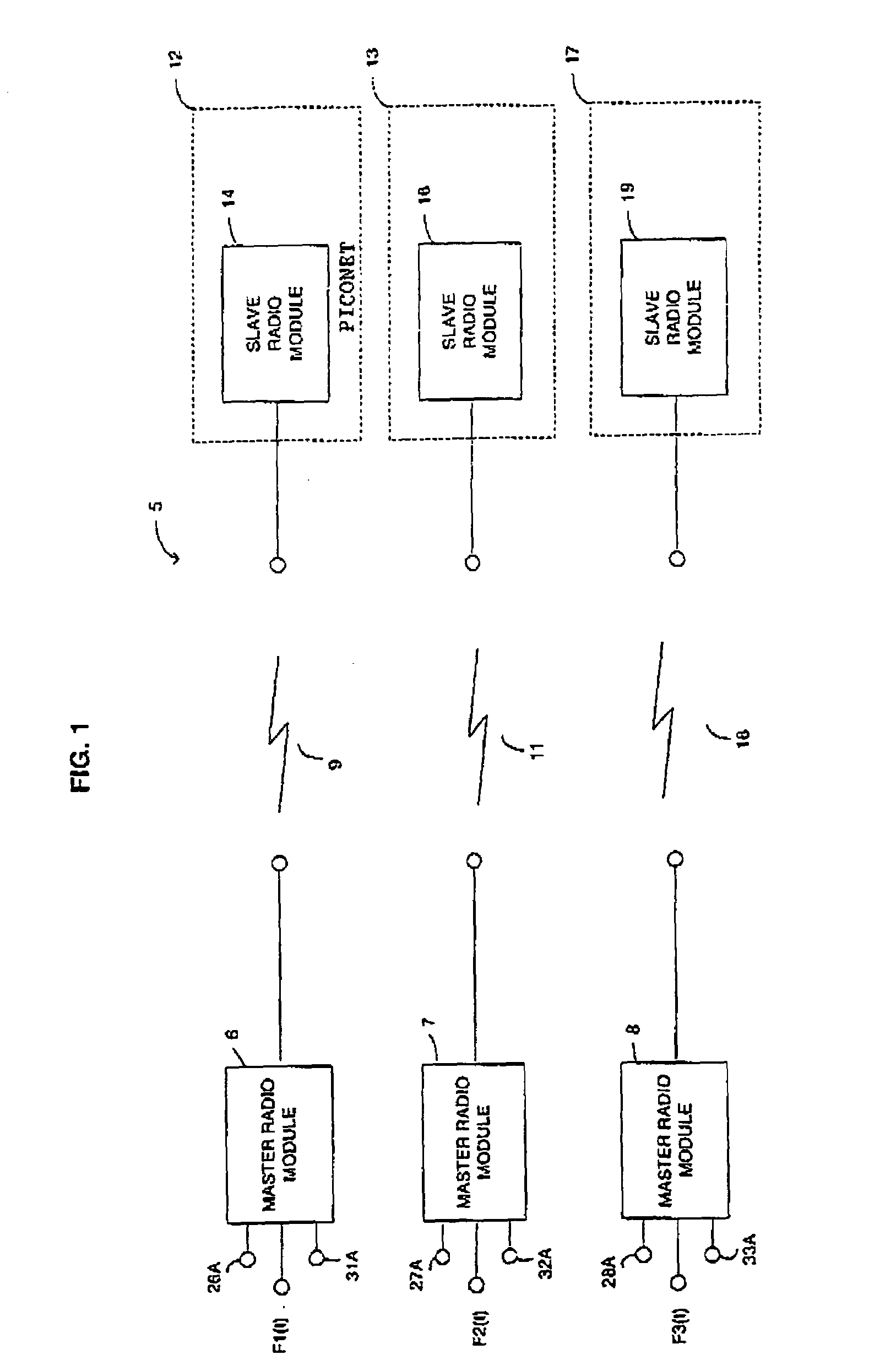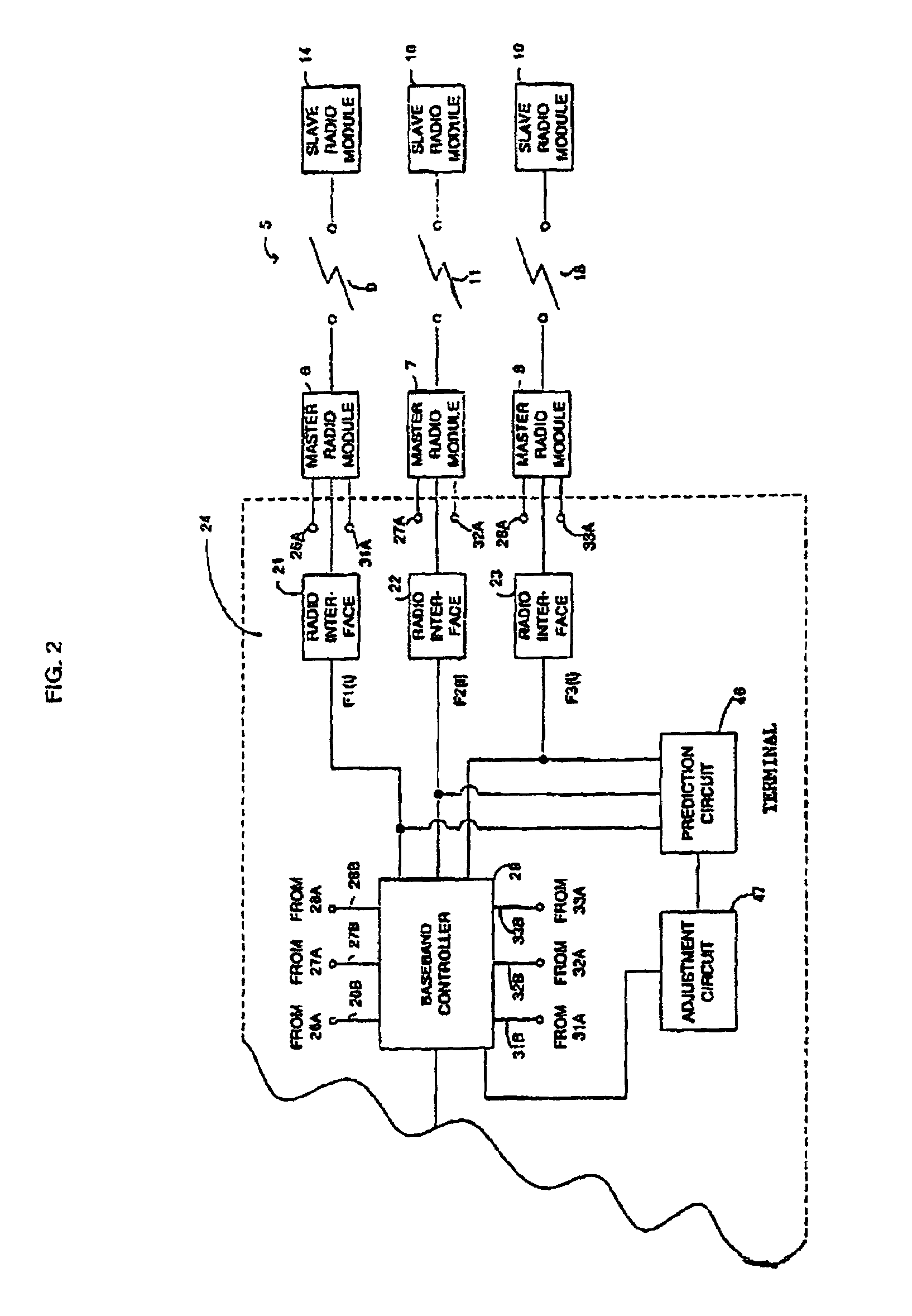Frequency hop collision prediction in a multi-channel, bluetooth-enabled packet transmission system
- Summary
- Abstract
- Description
- Claims
- Application Information
AI Technical Summary
Benefits of technology
Problems solved by technology
Method used
Image
Examples
Embodiment Construction
[0016]Referring now to the drawings, FIG. 1 shows a portion of a Bluetooth packet data transmission system 5 having a plurality of Bluetooth radio modules, three of which are shown and represented at 6, 7 and 8. It will be initially assumed that the modules 6 and 7 are “master” Bluetooth modules that have individually established active wireless connections or channels 9 and 11 with separate piconets 12 and 13 containing “slave” Bluetooth devices, two of whose radio modules are shown at 14 and 16, respectively. The third master radio module 8 is assumed to be initially quiescent, i.e., it has not yet initiated an active connection(s) with another piconet 17. Each of the radio modules shown in FIG. 1 is illustratively adapted to transmit selected frequencies in the 2.4 GHz band, which for Bluetooth operation is typically the Industrial-Scientific-Medical (ISM) band. Packet data to be exchanged over the active channel 9 between the modules 6 and 14 are formatted in accordance with sta...
PUM
 Login to View More
Login to View More Abstract
Description
Claims
Application Information
 Login to View More
Login to View More - R&D
- Intellectual Property
- Life Sciences
- Materials
- Tech Scout
- Unparalleled Data Quality
- Higher Quality Content
- 60% Fewer Hallucinations
Browse by: Latest US Patents, China's latest patents, Technical Efficacy Thesaurus, Application Domain, Technology Topic, Popular Technical Reports.
© 2025 PatSnap. All rights reserved.Legal|Privacy policy|Modern Slavery Act Transparency Statement|Sitemap|About US| Contact US: help@patsnap.com



